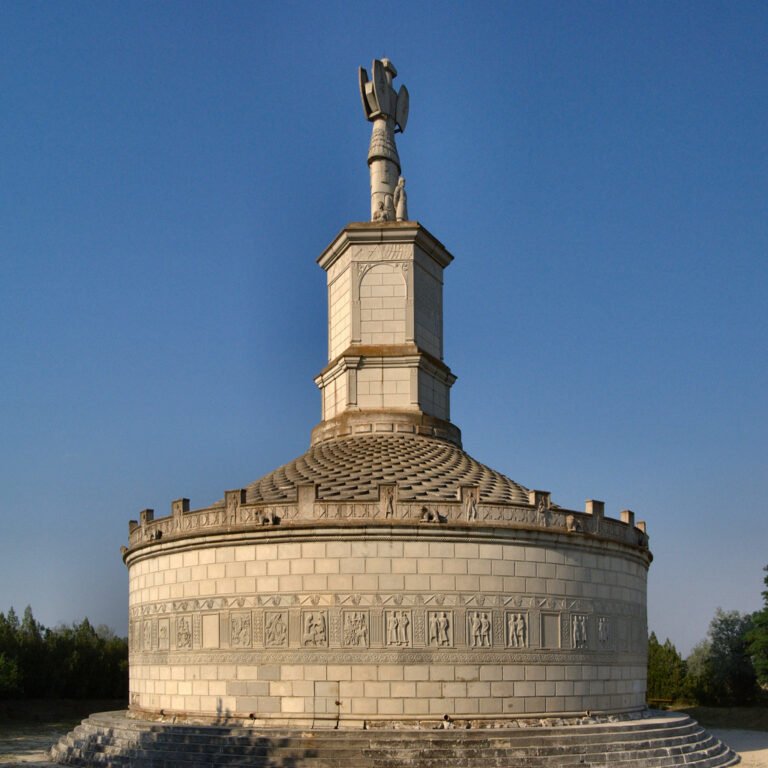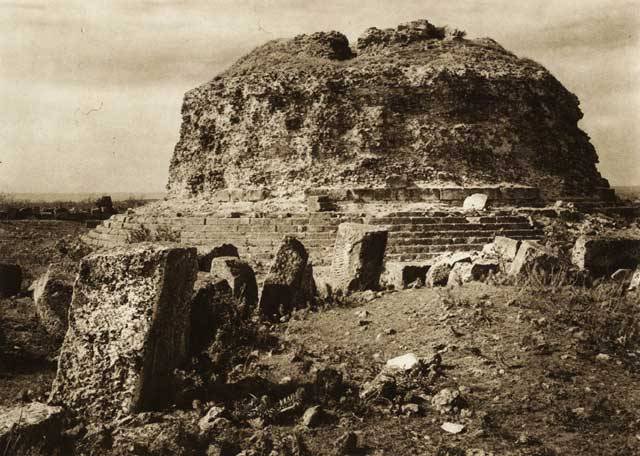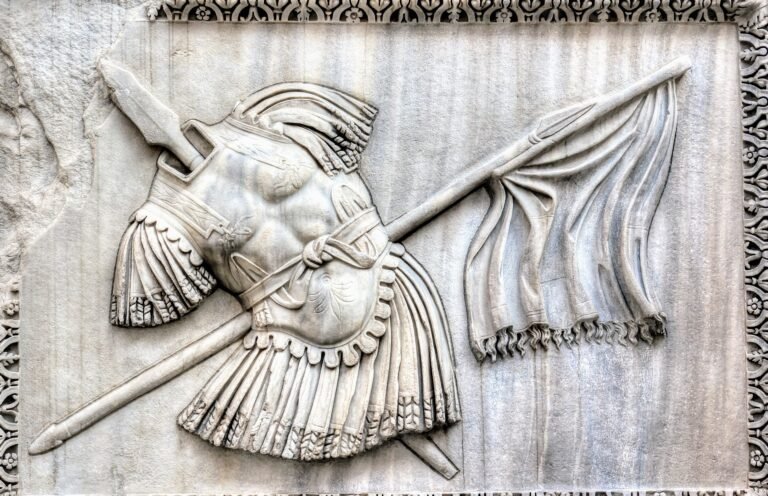Trophies in Classical Greece and Rome
Greek ‘tropaia’ / Latin ‘trophaea’ – from the Greek ‘trope’ meaning a turning point i.e. the rout of an enemy.
Originally a Greek practice of marking the point on a battlefield where the defeat of an enemy took place.
The Greek tradition of erecting an enemy suit of armour on a stake, marking the spot where an enemy was routed, was originally intended as a mark of thanks to the Gods for their victory. Trophies were also dedicated in the sanctuary of the God who was thought to have helped to achieve the victory.
The appearance of trophies began in approximately the sixth century BC and they were a common feature by the time the Greeks went to war with Persia. These more makeshift battlefield erections became more permanent structures in stone from around fourth century. Following the Battle of Leuctra (371 BC) in which the Theban forces defeated the Spartans, the original ‘tropaion’ was set up but this was later replaced with a circular stone structure which was itself carved with depictions. On top of the stone structure was a tree trunk which had the shields, weapons and armour of the Spartans attached. These more permanent structures for battlefield trophies subsequently became a popular motif in art. Sculpted trophies were produced accompanied by sculpted statues of enemy captives and Greek victors were then created to decorate important buildings.
The Romans began adopting these trophy styles in their own art from the first century BC, and they became a common feature in sculpture and art in the Roman world as a result. Depictions also feature of Roman coins where they had been struck following notable battles.
The term ‘trophy’ is also applied to collections of masses of weapons and armour gathered after battles. Depictions of this kind later became a feature of Roman commemorative monuments.
Following the example of the more permanent Theban monument, later examples became increasingly monumental. A fascinating Roman example is the ‘Troparum Traiani’ or Trajanic Trophy which was built in Romania to commemorate Trajan’s victory over the Dacians at the Battle of Adamclisi in 101 – 102 AD. An alter was erected at the site containing the names of the 3,000 fallen Roman and auxiliary soldiers, an inscription dedicating the structure to Mars the Avenger and 54 sculpted panels depicting Roman legionaries fighting enemies. Unfortunately the structure was reduced to rubble by the twentieth century but was it was impressively reconstructed in 1977.
The Tropaeum Traiani as it appears today

The dedicatory inscription has been partially re-assembled and is shown below and in translation.
MARTI ULTOR[I]
IM[P(erator)CAES]AR DIVI
NERVA[E] F(ILIUS) N[E]RVA
TRA]IANUS [AUG(USTUS) GERM(ANICUS)]
DAC]I[CU]S PONT(IFEX) MAX(IMUS)
TRIB(UNICIA) POTEST(ATE) XIII
IMP(ERATOR) VI CO(N)S(UL) V P(ater) P(atriae)
?VICTO EXERC]ITU D[ACORUM]
?—- ET SARMATA]RUM—-]E 31.
To Mars Ultor,
Caesar the Emperor, son of the divine Nerva,
Nerva Trajan Augustus, Germanicus, Dacius, Pontifex Maximus, Plebeian Tribune for the 13th time,
[proclaimed] Emperor [by the army] for the 6th time,
Consul for the 5th time, Father of the Fatherland,
Conquered the Dacian and Sarmatian armies…



READ MORE.
– Frieze Gallery of the Trajanic Trophy (Gallery of 49 existing frieze panels from the Trajanic Trophy)
LINKS.
– Roman Collection (Roman themed merch from High Speed History)
– Greek Collection (Greek themed merch from High Speed History)







1 Comment
Comments are closed.